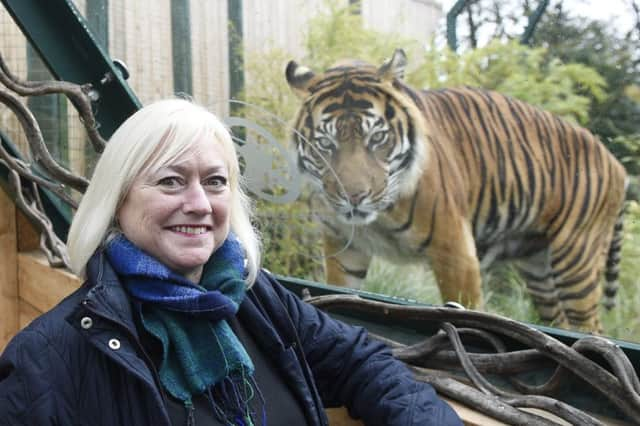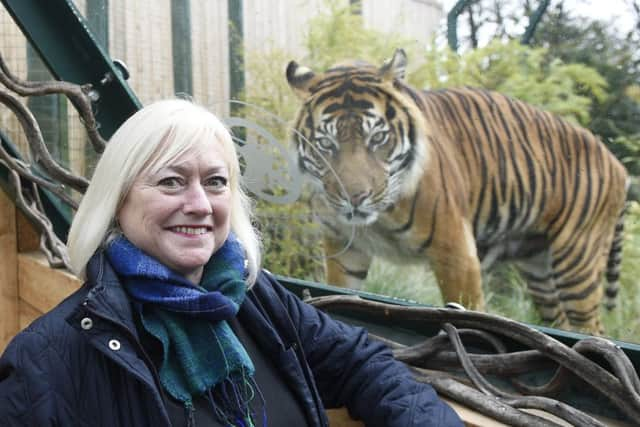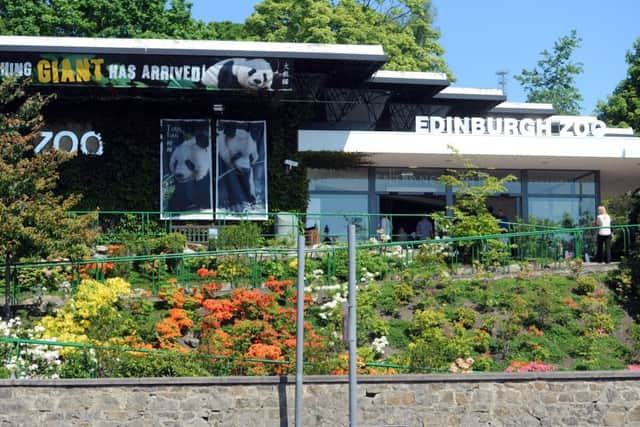Edinburgh Zoo earns its stripes through tiger research


Although primarily known as a leading tourist attraction, with more than 600,000 visitors each year, the zoo is aiming to increase the profile of its research work, which plays a vital role in internationally coordinated efforts to preserve diversity of life.
The site on Corstorphine Hill is owned and operated by the Royal Zoological Society of Scotland (RZSS) and boasts one of only three genetics labs in Europe.
Advertisement
Hide AdAdvertisement
Hide AdIt’s home to a team of scientists working on a variety of projects, from combatting the illegal trade of rhino horn to creating a ‘molecular stud book’ of wildcats north of the border.


The central aim is to solve conservation problems with zoo-based techniques.
“We support a wide variety of research programmes both across the UK and around the world,” said Barbara Smith, recently-appointed CEO at RZSS.
“Zoos have been really transformed in recent years. Edinburgh has become a leader in conservation - it’s all about communicating the value of diversity in the living world.”
One of the society’s flagship projects is implementing its ‘Big Cat Strategy’, launched in 2014.


This led to the opening in June of a new £500,000 enclosure for the zoo’s pair of Sumatran tigers.
Named Tiger Tracks, the facility offers the critically endangered animals three times more space than their previous enclosure.
Male Jambi, aged 12, arrived in Edinburgh in July 2015 from Berlin, while female Baginda, also aged 12, arrived from Benidorm in May 2011.
Advertisement
Hide AdAdvertisement
Hide AdWith an estimated 100-300 of the species left in their natural island habitat in Indonesia, Smith is hopeful the Edinburgh pair will soon begin breeding.


Around 97 per cent of all wild tigers have died out over the last century.
“We’re supporting their conversation by raising awareness of why they become endangered - be it human conflict, deforestation or poaching,” added Smith.
Tiger Tracks has already proved popular with visitors. But not all enclosures are open to the public.


The RZSS is also working with 20 partners, including Scottish Natural Heritage, to support the reintroduction of Scottish wildcats bred in captivity to the wilderness.
The species is among the most critically endangered in the world, largely as a result of breeding with feral domestic cats.
RZSS research suggests that many of the remaining wildcats at large have less than 85 per cent genetic purity.
However, many of the wildcats in captivity have purity of more than 90 per cent. Plans are now in place to reintroduce some of these captive wildcats to boost the native population.
Advertisement
Hide AdAdvertisement
Hide AdThe RZSS team has taken inspiration from the successful reintroduction of the Iberian lynx in southern Spain.
Although plans are at an early stage, it is hoped wildcats will be eventually introduced across six specially identified locations.
Smith stresses that all RZSS projects are the result of the hard work of not only staff, but the many volunteers and members who keep the charity afloat.
“We receive no government funding. We are always fundraising.
“The funds we raise go straight back into our conservation work.”
